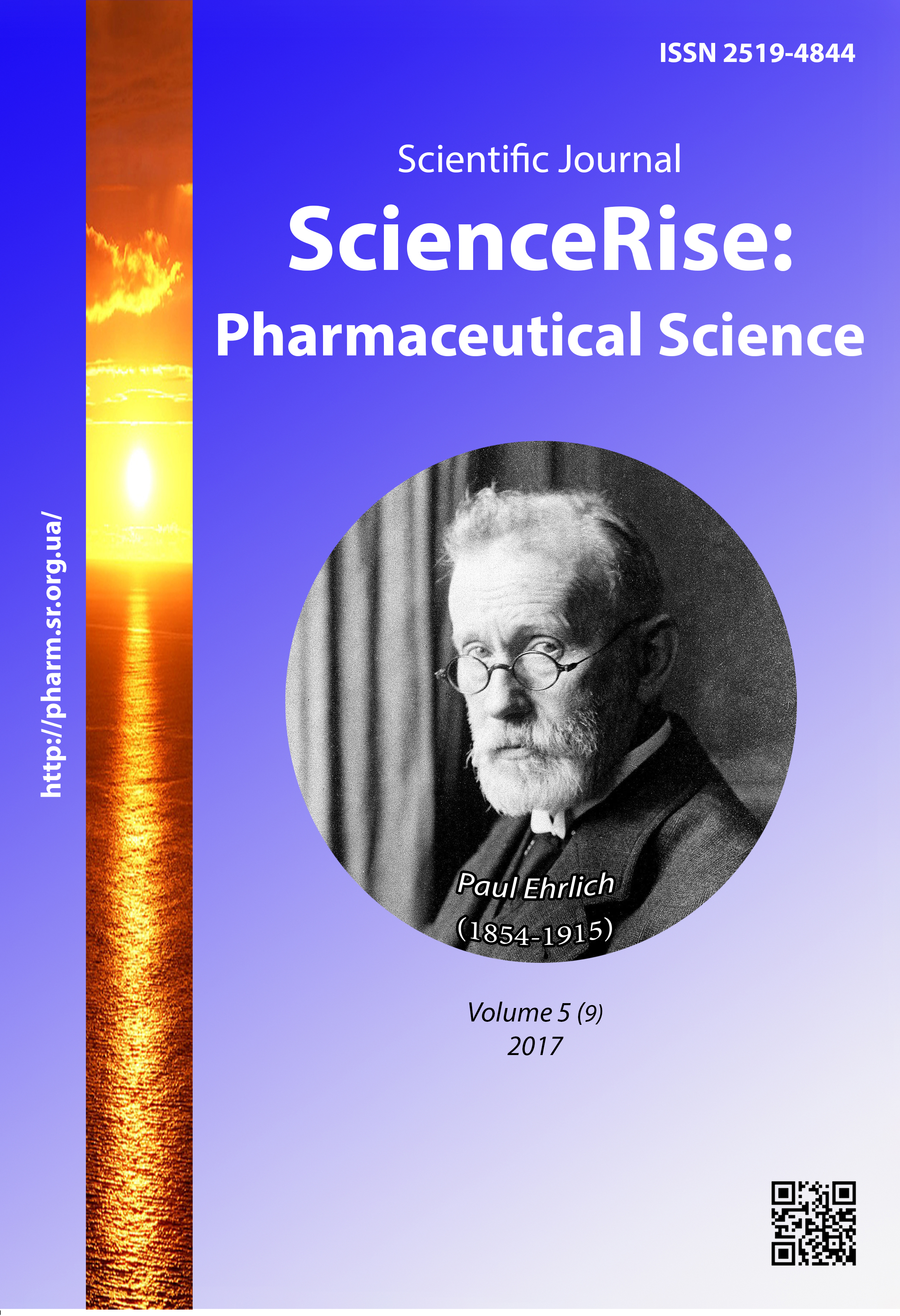Research of molecular mass of proteins, which obtained by different technological methods of the Candida fungi cells disintegration
DOI:
https://doi.org/10.15587/2519-4852.2017.113475Keywords:
technology disintegration, ultrasound, rubbing, proteins, molecular weight, candidiasis, vaccine, antigenAbstract
For the treatment of candidiasis, one of the most common diseases in the world, it is perspective to develop a subunit vaccine based on proteins and polysaccharides of Candida albicans and Candida tropicalis.
The aim. Investigate the molecular weight of the proteins derived from the Candida albicans and Candida tropicalis fungal cells by various technological methods of separate disintegration.
Material and methods. Different methods of disintegration were used in the study, namely ultrasound, rubbing with abrasive material and freezing-defrosting.
Results and discussion. According to the results obtained, it was determined that in all cases, the proteins were represented by three fractions with a molecular weight of up to 10 kDa, a molecular weight of up to 75 kDa, a molecular weight of over 75 kDa, which in each case almost did not differ in quantitative content. It should be noted significant quantitative dominance of fractions of proteins with a molecular fraction of up to 75 kDa in compare with other fractions.
Conclusion. All investigated methods of disintegration, namely ultrasound, rubbing with abrasive material and freezing-defrosting, provide synchronous separation of the same fractions of proteins of fungal cells of Candida albicans and Candida tropicalis
References
- Antinori, S., Milazzo, L., Sollima, S., Galli, M., Corbellino, M. (2016). Candidemia and invasive candidiasis in adults: A narrative review. European Journal of Internal Medicine, 34, 21–28. doi: 10.1016/j.ejim.2016.06.029
- Cassone, A. (2013). Development of vaccines for Candida albicans: fighting a skilled transformer. Nature Reviews Microbiology, 11 (12), 884–891. doi: 10.1038/nrmicro3156
- Tikhonov, O. I., Frolova, O. Y., Gudzenko, O. P., Barnatovych, S. V. (2016). Marketing research of antifungal drugs for local use. Social pharmacy in health care, 2 (2), 77–81. doi: 10.24959/sphhcj.16.38
- Grover, A., Bhandari, B. S., Rai, N., Lakhera, P. C. (2010). Candida albicans vaccines. Biotechnology International, 3 (1), 4–17.
- Wang, X., Sui, X., Yan, L., Wang, Y., Cao, Y., Jiang, Y. (2015). Vaccines in the treatment of invasive candidiasis. Virulence, 6 (4), 309–315. doi: 10.4161/21505594.2014.983015
- Rybalkin, M. V. (2014). Biotechnological description of technologies for obtaining of antigens of Candida genus fungi. Annals of Mechnikov's Institute, 2, 20–24.
- Edwards, J. E. (2012). Fungal cell wall vaccines: an update. Journal of Medical Microbiology, 61 (7), 895–903. doi: 10.1099/jmm.0.041665-0
- Rybalkin, M. V. (2014). Determination of the optimal method of disintegration of fungal cells Candida albicans and Candida tropicalis. Actual problems of pharmaceutical and medical science and practice, 15 (2), 71–75.
- Rybalkin, M. V., Strelnikov, L. S. (2016). Eksperymentalne obgruntuvannia intensyvnosti ultrazvuku dlia ruinuvannia klityn hrybiv Candida. Zbirnyk naukovykh prats spivrobitnykiv NMAPO imeni P. L. Shupyka, 26, 246–250.
- Struchkova, I. V., Kal'yasova, E. A. (2012). Teoreticheskie i prakticheskie osnovy provedeniya elektroforeza belkov v poliakrilamidnom gele. Nizhny Novgorod: Nizhegorodskiy gosuniversitet, 60.
Downloads
Published
How to Cite
Issue
Section
License
Copyright (c) 2017 Mykola Rybalkin, Leonid Strelnikov, Oksana Strilets

This work is licensed under a Creative Commons Attribution 4.0 International License.
Our journal abides by the Creative Commons CC BY copyright rights and permissions for open access journals.








